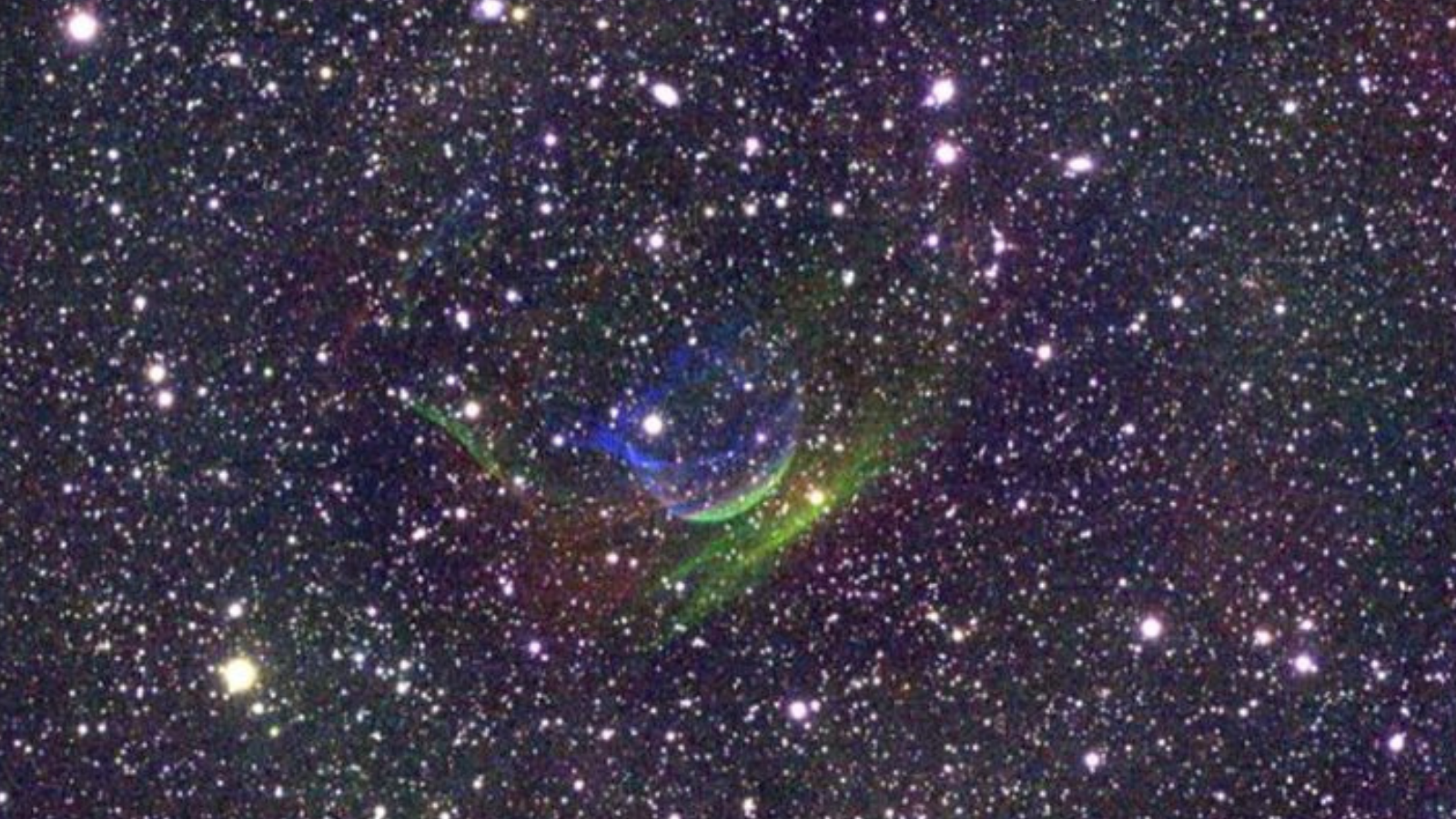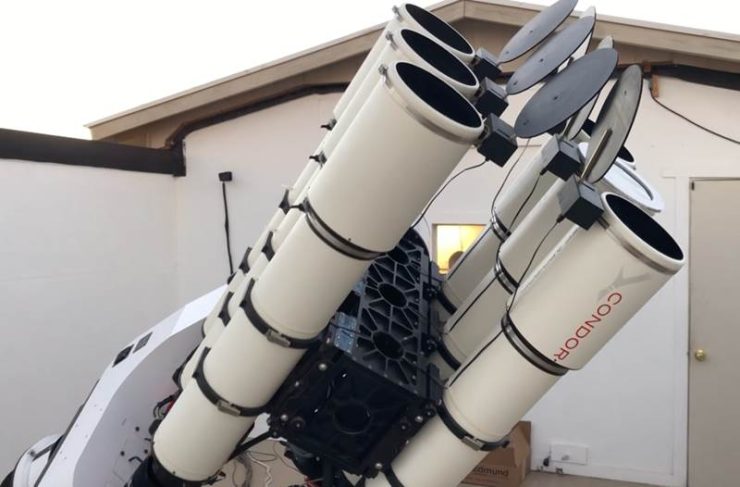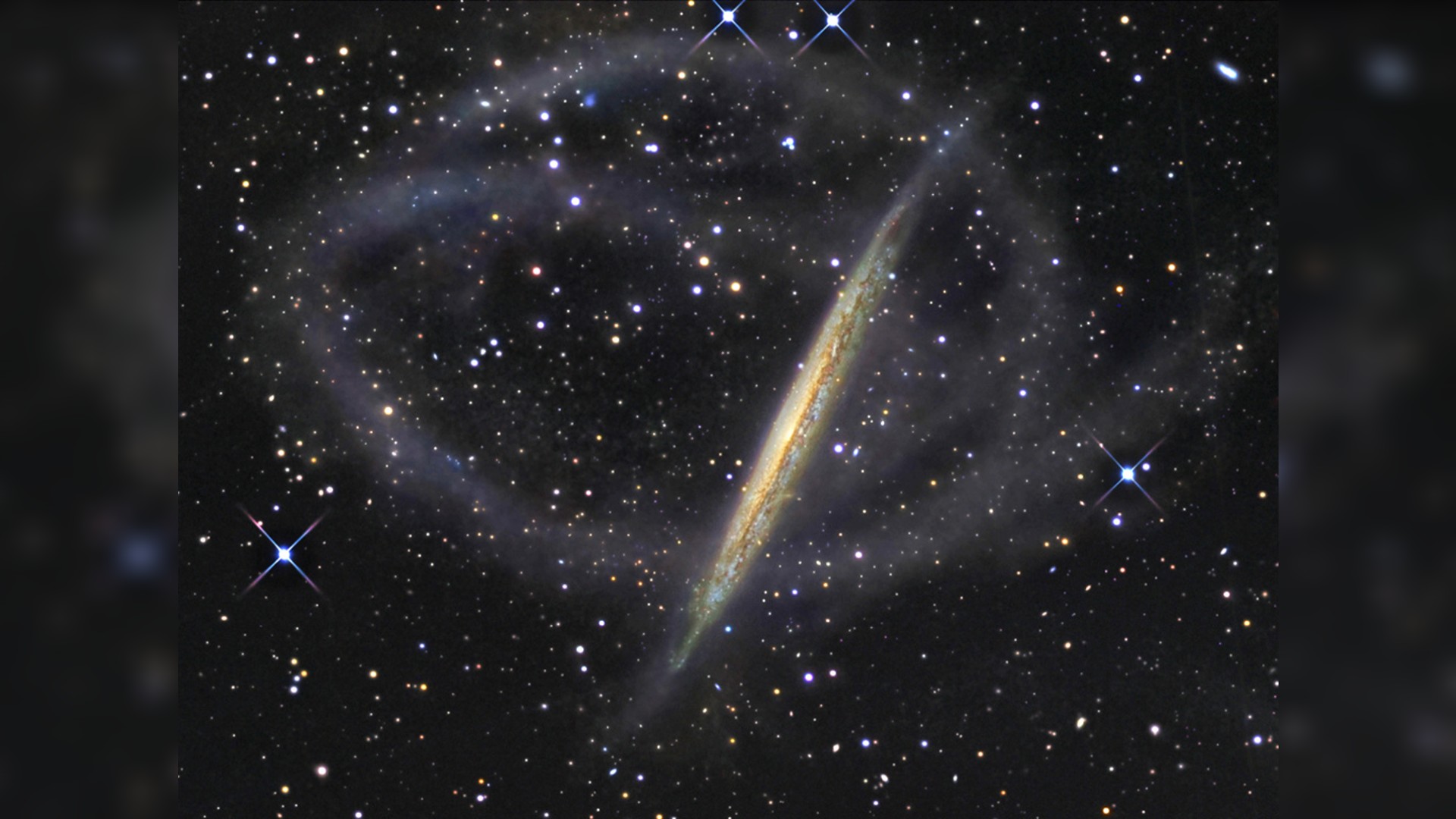
The first data from a new telescope array is in.
The Condor Array has revealed a stunning look at a distant dwarf nova — a scene that offers astronomers a new, very-low-brightness view of the universe to marvel over.
Condor is comprised of six refracting telescopes, which are united by computers to form a giant telescope conglomerate that can detect and study objects too faint to be seen with a normal. single telescope. One of the first missions assigned to Condor was to focus on the dwarf nova named Z Camelopardalis. In particular, American Museum of Natural History researcher Michael M. Shara wanted to know if this dwarf nova has anything to do with a "new star" that Chinese Imperial astrologers recorded in the year 77 BCE.
Not only did the new telescope array strengthen this link, but it also discovered intriguing, never-seen-before features of the dwarf nova. Since it was first observed in visible light by astronomer Henry Park Hollis in 1904, the object has been studied in great detail. So, finding new information about it is pretty exciting.
Related: Why astronomers are worried about 2 major telescopes right now
Shy novas coming out of their shells
Dwarf novas are a distinct class of supernova explosion that happens in one of two ways.
The first way has to do with a white dwarf stellar remnant gradually siphoning matter from a companion star to its own surface. Such siphoning goes on until the process triggers a thermonuclear blast. The second path that can lead to a dwarf nova, on the other hand, has to do with a huge amount of material from a companion star suddenly getting "dumped" on the white dwarf with the same thermonuclear result.
In January of 2007, an image of Z Camelopardalis, taken by the 4-meter telescope at Kitt Peak National Observatory, seemed to show it is surrounded by a partial shell of gas that may have been emitted during that thermonuclear explosion.
To test this idea, Shara and colleagues imaged Z Camelopardalis with Condor in November of 2021 and compared this to the 2007 image. This allowed them to measure how much the shell had expanded over time and thus the speed at which its gas moved outwards.
This confirmed to the team that the shell was expanding at a rate consistent with an explosion that occurred around 2,000 years ago, suggesting this explosion could indeed be the "new star" seen in 77 BCE China.

Shara and the team were astonished to see Condor had been able to distinguish the complete shell of gas around Z Camelopardalis. The new telescope array also saw a second, larger (but fainter) shell of gas around the dwarf nova. Such a shell is something just too dim to be seen with conventional telescopes.
"This is the first example ever found of two concentric shells surrounding a dwarf nova, and it confirms a long-standing hypothesis that concentric shells must surround frequently erupting novae of relatively massive white dwarfs," Shara said.
However, this wasn't the extent of the nova discoveries revealed in Condor's first data drop.
Using the telescope, Stonybrook University professor Kenneth M. Lanzetta and team spotted another extremely faint shell of gas surrounding a "recurrent nova." This class of nova is also caused by white dwarfs gathering matter and becoming unstable, but the explosions repeatedly occur on a timescale of less than 100 years.
One recurrent nova, M31N 2008-12a, is located in the closest large galaxy to the Milky Way, Andromeda. It erupts every year and is surrounded by a vast "super-remnant" made of dust shells that expand outward for around 44 million light-years. Other recurrent novas should also be surrounded by these shells — but, until now, they have proved elusive.
Lanzetta and colleagues spotted a shell around the recurrent nova KT Eridani (KT Eri), which blows its top every 40 to 50 years. This shell is around 50 times larger than previously observed nova shells, the team says, and appears to be the result of multiple nova shells crashing into each other over the course of tens of thousands of years.

There are more treats in the first batch of Condor data too, with Lanzetta and colleagues also using the telescope to study stellar streams around the galaxy NGC 5907, a well-known spiral galaxy located some 50 million light-years from Earth. These streams of stars are created when the larger galaxies that satellite galaxies orbit gravitationally tug on the satellites, disrupting them and drawing out stars.
Condor followed up on two previous images of NGC 5907, located 50 million light years from Earth. One in 2010 showed stellar streams forming two helix-like loops around the galaxy, but another in 2019 lacked these features.
Like the latter image, the Condor observation of NGC 5907 seemed to lack this helix-like feature, too. The team suggested that it was an artifact related to the image processing of the 2010 image.
The Condor Array Telescope findings are published across a series of four papers published in the journal Monthly Notices of the Royal Astronomical Society







